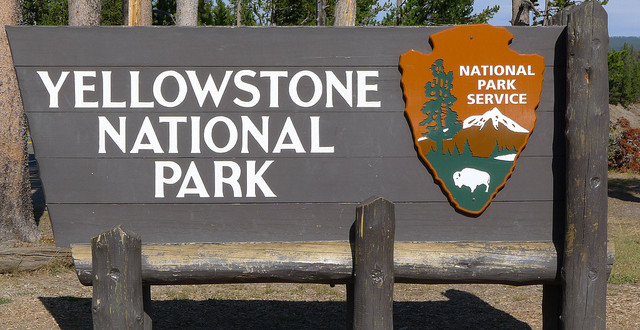Stage 1 fire restrictions have been announced for Grand Teton National Park and other parts of the Jackson, Wyoming area.
According to the Jackson Hole News & Guide, in addition to Grand Teton, the restrictions are in effect for Bridger-Teton National Forest, the National Elk Refuge, and the Bureau of Land Management High Desert District as a whole.
However, within Bridger-Teton, both the Teton and Bridger Wildernesses have been exempted, owing to their higher elevations and relative wetness compared to lower-elevation parts of the forest. From the Guide:
The decision to boost the fire restrictions was influenced by two other factors, [Bridger-Teton spokeswoman Mary] Cernicek said: big fires in other areas and next week’s solar eclipse.
Cernicek said that firefighting resources are tight right now because “several geographic areas are experiencing major incidents which have the potential to exhaust all agency fire resources.”
Mike Johnston, the assistant fire management officer for the Bridger-Teton agreed: “The limited number of available fire resources due to the national fire situation and the increased traffic may limit our ability to respond to fires in a timely fashion” he said. “We want people to take the danger seriously and obey the restrictions that are in place.”
The eclipse, Cernicek said, means many more visitors than usual will be in the area, a significant number of them camping in the forest and lots of them people who aren’t as fire-wise as the normal backcountry users.
[…]
Among stage 1 restrictions:
• Campfires and barbecue grilling are allowed only at designated recreation sites such as established campgrounds and picnic areas. It’s OK to use portable stoves and lanterns using gas or liquid fuel.
• Smoking is allowed only in closed vehicles, buildings, in developed rec sites or in an area at least 3 feet in diameter that is barren or cleared of flammable material, i.e., parking lots or places surrounded by water.
Year-round restrictions include no use of chainsaws in national parks or on the refuge; chainsaws on Forest Service land can be used only if they have approved spark arresters and operators carry fire extinguishers and a shovel; no use of fireworks; charcoal fires only in official campgrounds.
Stoves and grills that burn contained fuel that can be turned off and on are allowed, but must be attended at all times.
Cernicek said abandoned campfires in the Bridger-Teton are common. The penalty for being convicted of leaving a fire burning is up to six months in jail and a fine of up to $5,000.
Fire danger in Yellowstone National Park has been high since late July, although no fires are currently burning in park boundaries. Fire officials have predicted an average fire season for 2017.
2016 saw the most fire activity in Yellowstone National Park since the 1988 fires.
The most significant fire event around Yellowstone, so far, has been the June Fire 13 miles west of the East Entrance. After sparking in late July, the fire grew to nearly 2,000 acres and (potentially) could have closed U.S. Highway 14/16/20—and the East Entrance. Currently, the fire is smoldering, with no updates posted to Inciweb as of August 11, 2017.
 Yellowstone Insider Your Complete Guide to America's First National Park
Yellowstone Insider Your Complete Guide to America's First National Park





